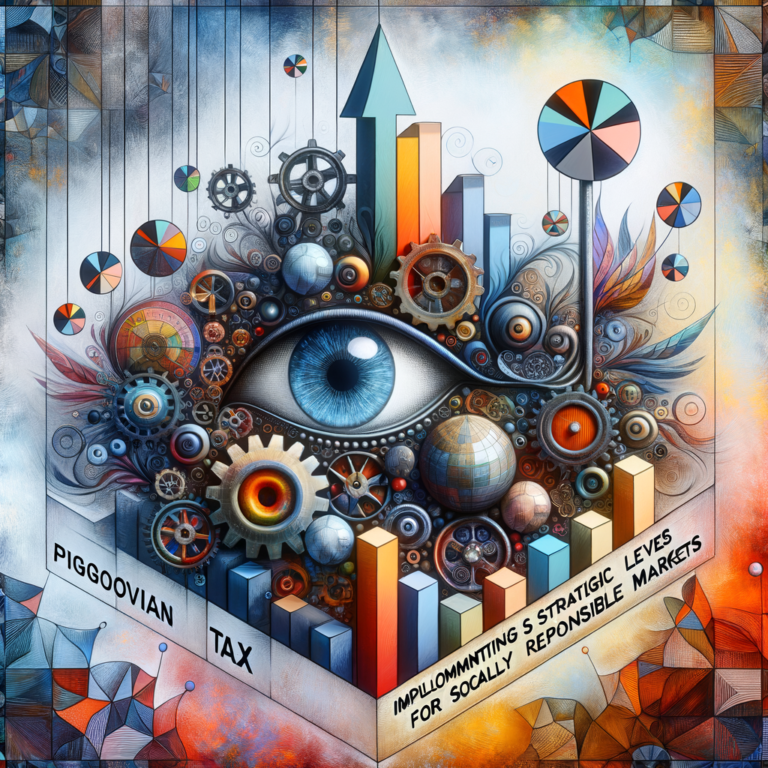Table of Contents
The Pigovian Tax: A Tool for Socially Responsible Markets
Imagine a world where companies are held accountable for the negative externalities they produce. A world where pollution, congestion, and other harmful effects on society are not just shrugged off as the cost of doing business. This is where the concept of Pigovian tax comes into play.
Named after the British economist Arthur Pigou, the Pigovian tax is a levy imposed on producers who create negative externalities. These externalities are the unintended consequences of economic activities that affect third parties who are not involved in the transaction. For example, when a factory pollutes the air, it imposes costs on society in the form of health problems and environmental damage.
- Arthur Pigou, a pioneer in welfare economics, argued that when producers do not bear the full cost of their actions, they have no incentive to reduce their negative impact on society. By imposing a Pigovian tax equal to the external cost, the government can internalize these externalities and encourage producers to take social costs into account when making decisions.
- In essence, the Pigovian tax aims to align private incentives with social welfare by making producers pay for the harm they cause. This not only helps correct market failures but also promotes socially responsible behavior in the business world.
Implementing Pigovian Taxes: A Strategic Approach
One of the key challenges in implementing Pigovian taxes is determining the appropriate level of taxation. If the tax is set too low, it may not effectively discourage harmful behavior. On the other hand, if the tax is set too high, it could lead to unintended consequences such as excessive compliance costs or reduced economic activity.
- For example, in the case of carbon emissions, a Pigovian tax can be used to incentivize companies to reduce their greenhouse gas emissions. By taxing carbon at a rate that reflects the social cost of climate change, the government can encourage businesses to invest in cleaner technologies and practices.
- According to a study by the International Monetary Fund, a global carbon tax of $75 per ton by 2030 could reduce carbon emissions by 23% and generate substantial revenue for governments to invest in renewable energy and other sustainable initiatives.
Canada has been a pioneer in implementing Pigovian taxes to address environmental issues. For instance, British Columbia introduced a carbon tax in 2008, which has been successful in reducing emissions while maintaining economic growth. The tax is revenue-neutral, meaning that the revenue collected is returned to taxpayers through tax cuts and rebates.
On the other hand, the United States has been slower to adopt Pigovian taxes, with resistance from industry groups and policymakers. However, there are growing calls for a carbon tax at the federal level to address climate change and promote a transition to a low-carbon economy.
By implementing Pigovian taxes strategically, governments can create a more sustainable and socially responsible market economy. It is not just about raising revenue; it is about shaping incentives and behaviors to benefit society as a whole.
I'll conclude by adding that I'm doing my best to clarify and simplify these topics. But remember that these little essays are only the beginning, and I encourage you to continue reading, learning, and exploring. To assist you, here are a few books about economics that will prepare you for your journey into the world of finance:












